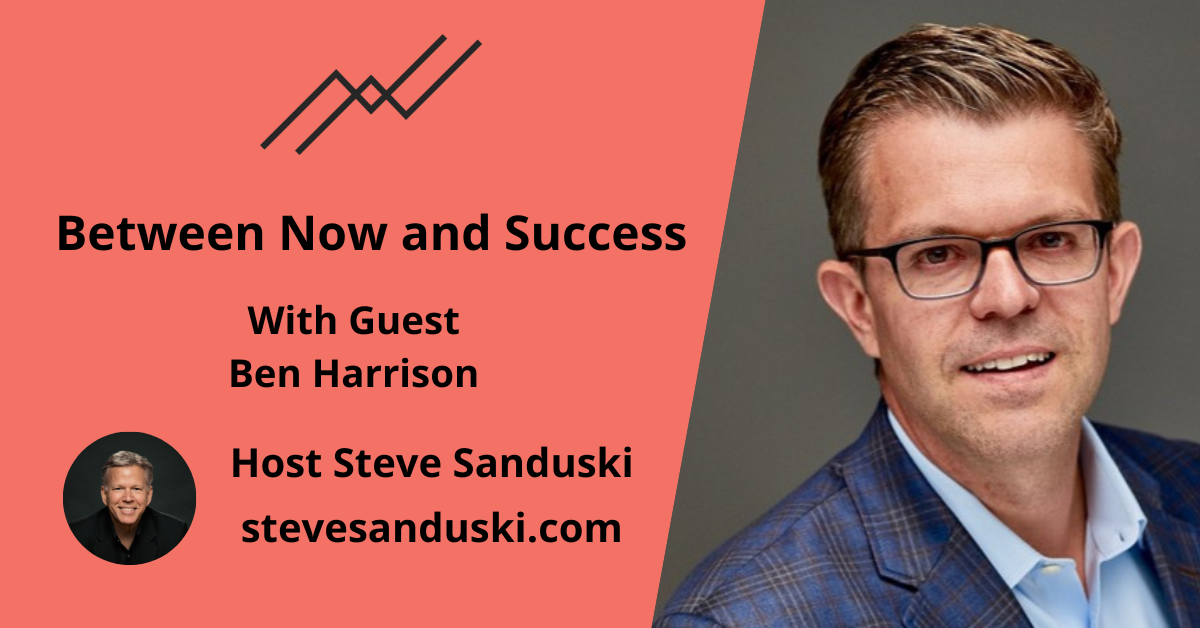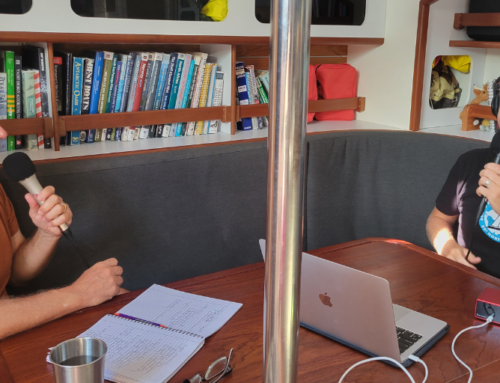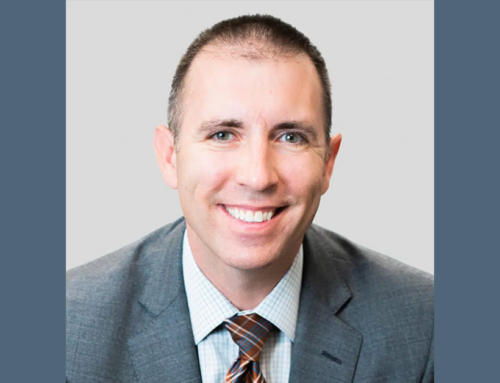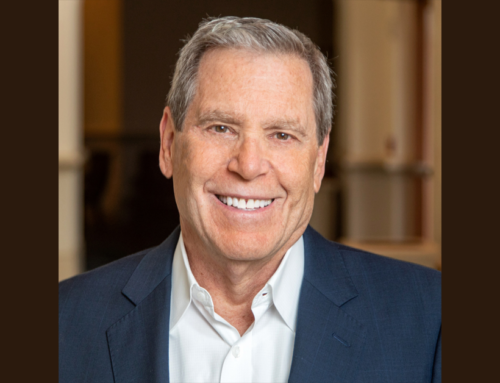Ben Harrison is the Co-Head, Wealth Solutions at BNY Mellon | Pershing, one of the industry’s largest custodians.
I sat down with Ben at the CAIS Alternative Investment Summit in Beverly Hills, CA and we discussed the biggest challenges and opportunities facing financial advisors as well as his thoughts on what’s happening in the alternative investment space.
3 Challenges and Opportunities
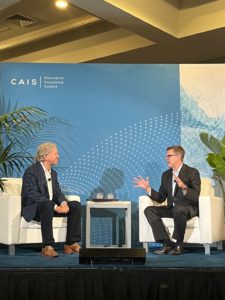
Ben Harrison and Steve Sanduski at CAIS Alternative Investments Summit
Ben identified 3 key areas that are on his radar: 1) advisory firm growth (or lack thereof), 2) attracting and retaining talent, and 3) managing your business in a future that may have more headwinds than tailwinds.
Let’s look at each one in some detail.
1. Advisory Firm Growth
In a recent post, I said the quiet part out loud: “The average RIA firm had negative organic revenue growth over the past five years if you exclude market movement using a traditional 60/40 market portfolio as a proxy for RIA investment allocations.”
My analysis was based on Schwab’s latest benchmarking study. And while you’ll hear people talk about how fast the industry is growing, “Essentially all the revenue growth for RIA firms in the Schwab study over the past five years was simply due to growth in the financial markets.”
Very few advisory firms experience material organic growth, and many of the firms posting big revenue growth numbers are simply buying revenue through M&A.
For the select few who do show organic growth, what are the common characteristics? Ben shared a couple.
- A capacity and desire for growth. The fast growers have professional management coupled with a growth mindset. They want to grow and they put the people, processes, and technology in place to make it happen. They often have dedicated business development teams and sophisticated digital and IRL marketing programs in place. As a result, they generate steady and relatively predictable lead flow.
By contrast, I find that the vast majority of advisors who have been in business for 10 years or more, have already “made it” and are fine with zero organic growth. They get a few client referrals each year to replace the clients who leave/die and normal client distributions, and are cool with simply riding the “markets rise over the long-term” wave. I get it. Growing a business past the point where you’re financially comfortable is not for everybody.
Riding the long-term wave has worked out well because when we zoom out, we’ve essentially been in a bull market since August 1982. But that won’t last forever.
- A world-class specialization or niche. “Advisory firms often grow via referral, and if you’re known for something really exceptional, you’re going to get more opportunities,” said Ben. And those referrals could come from existing clients, centers of influence, or, in the case of the billion-dollar plus RIAs, from custodian referrals.
Cresset Capital is a great example of a large RIA that has developed a world-class specialty in delivering boutique family office services targeted to CEO founders and entrepreneurs. All their marketing, messaging, and delivery of products and services is attuned specifically to this subgroup of high-net-worth investors.
If you’re a general practitioner financial advisor, you’ll earn general practitioner wages.
2. Attracting and Retaining Talent
In my financial advisor coaching work, we spend a significant amount of time working on people issues. I’m not exaggerating when I say every advisory firm has people issues. And frankly, the difficulties of dealing with staff is one of the main reasons why many advisors are content to remain a small firm with less than 5 team members.
Assuming you want to attract talent, Ben said,
Advisory firms have a great opportunity to become employers of choice and go out to the marketplace and bring folks in that may not have been in financial services and provide an uplift in terms of the talent that we see. It’s a great opportunity, but it requires dedication and a commitment to the space. You can’t lean on the big wirehouses and big financial services firms to create these training programs, to train people up to eventually take them into your business. You really have to create your own strategy to attract that talent, bring them through a career path, and make them a part of your culture.
Here are several podcasts where I discuss specific things you can do to create an attractive employee value proposition:
- Fidelity’s Anand Sakar on how to attract and compensate A+ talent.
- Gartner’s Brian Kropp on building a culture that will win the battle for talent.
- Yonhee Gordon and Lisa Salvi on using clear career paths and partnership opportunities to attract and retain next generation advisors.
3. Managing Your Business for a Changing Future
Strong tailwinds over the past 40 years as stock prices rose from 800 to 35,000 on the Dow and 30-year Treasury bond yields dropped from 14% to about 1% fueled tremendous growth for financial advisors. And another change that gets little credit for the huge profitability of advisory firms is the shift from commissions to recurring fees. Instead of starting the year unemployed as a commission advisor, the recurring fee model–with an average 97% retention rate—means advisors can benefit from compounding growth and spend more time servicing clients (and getting more referrals) than prospecting for the next sale.
I don’t see a new “step change” like the shift from commissions to fees on the horizon to propel future advisory firm profitability.
What I do see is the tailwinds shifting to the following headwinds:
- Inflation is back.
- Interest rates are rising.
- War in Europe is back.
- Political divisions threaten our democracy.
- Existential threats in our climate are looming in the years ahead.
- Pandemic effects continue to reverberate.
- Client expectations continue to rise which leads to scope creep and margin pressure.
- The regulatory environment continues to stiffen.
And let’s not forget that there’s a handful of mega-RIAs intent on becoming national RIAs that could make life difficult for everyone else.
You can no longer skate on the firm ice of rising markets to keep you afloat.
Add it all up and advisors are facing mounting management challenges that require management muscles many have not flexed before. If you think you can avoid these issues by being a solo advisor, I think, over time, you’ll discover that you end up working harder for longer and for lower pay.
So, what do you do? I suggest two key things. First, up your management chops. Hire a coach who can be a sounding board, a confidant, and a light to your blind spots. Second, develop a specialty or niche that a material target market needs and become top 10% in the country in that area. If you’re top 10%, you will always be in demand regardless of the economic environment.
Alternative Investments
For years, the largest RIAs and the wirehouses have offered alternative investments to their clients. And it’s been a differentiator for them as they work with ultra-wealthy folks who want to feel like their wealth buys them access to investments reserved for just a few.
Ben Harrison on Using Alternative Investments as a Differentiator
But that’s changing. “What we’ve seen recently is a democratization happening,” said Ben. “Firms are getting into alternative investments and accessing products with more liquidity, which creates an easier way to approach alternatives in their practice. And firms like CAIS are really providing the infrastructure to be able to make that happen.”
Think about it. If your practice just uses equities and fixed income, that’s like going to a doctor who only uses antibiotics and analgesics to treat whatever your problem is. By adding more tools to your toolkit, you can more surgically address whatever needs your clients have. And alternative investments can greatly expand the opportunity set for your clients.
Want to view more content from CAIS’ Alternatives Investment Summit? Sign up for their learning platform, CAIS IQ.

